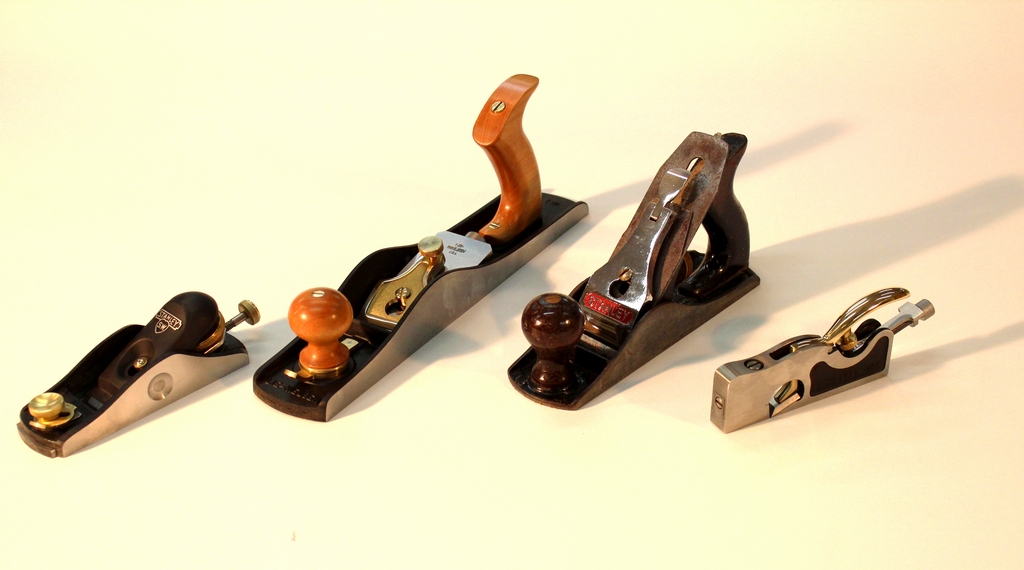
While hand planes are alluring to many woodworkers, getting started can be confusing since there are so many options. If you ask 100 hand plane enthusiasts which planes to start with, you might receive as many answers. Based upon my 15 year love affair with hand planes, the following is my suggested approach to help you get started.
For today’s hand tool purist as well as woodworking legends of days gone by, hand planes provide a means of performing a wide range of tasks ranging from dimensioning rough stock and preparing a finished surface, to creating joints and tuning them for a perfect fit. Today, however, many woodworkers have chosen a path where power tools perform many of the tasks that were previously performed by hand planes. You just can’t beat the performance and consistency of a power jointer and planer, dado blade on the table saw, and electric router.
It doesn’t, however, have to be an “either/or” scenario. Even those of us who have made a significant investment in a power tool arsenal can benefit from incorporating hand planes into our repertoire. My philosophy is “best tool for the task at hand”, and in many cases for me, that viewpoint leads me to a hand plane. Some of the aspects that I enjoy about hand plane use include:
- Precision to a couple thousandths of an inch
- Surface preparation quality that cannot be rivaled by power tools
- Low dust generation
- Quiet operation
- Soulful experience taking whisper thin shavings
- Beveling an edge
Start slowly, choose wisely. Hand planes differ from power tools in that they require more finesse and a better understanding of the tool to get good results. For that reason I suggest buying hand planes one at a time, getting the best quality that you can afford, and gaining confidence with that tool before moving onto the next. You will know that you have confidence with the tool when you are eager to pull it out to use on that critical surface or key joint in a prized project. At that point if you are feeling the need for more, you can feel good about expanding your arsenal. Also, as you look for your first planes it is important to understand that a bargain hand plane is, well, not necessarily a bargain. Some imperfections can be remedied, but many cannot. My recommendation is to start by buying hand planes that are high quality, tuned and ready to go. Once you get to know the joy of working with a tuned plane, then you might want to try your hand at restoring one that has potential, and by that point you will have a better sense of what to look for to find that “diamond in the rough”.
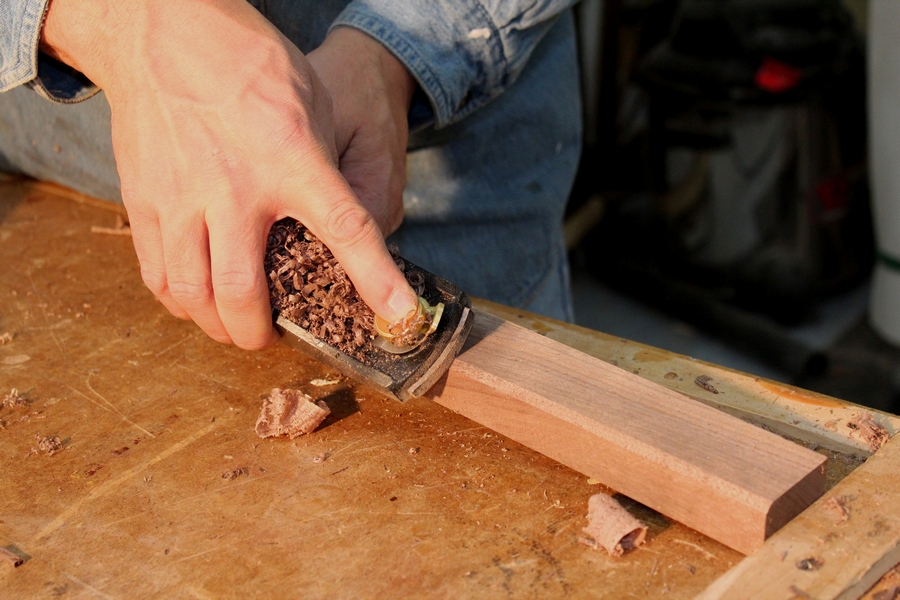
Block plane first. The most used plane in my shop, and frankly one of the most used tools overall, is the block plane. This tool provides tremendous versatility, and can be used for a variety of tasks including:
- Tuning joints
- Flushing edging glued to plywood shelving
- Rounding over edges
- Erasing mill marks left from a table saw or bandsaw
- Adjusting the fit of a door
- Beveling an edge
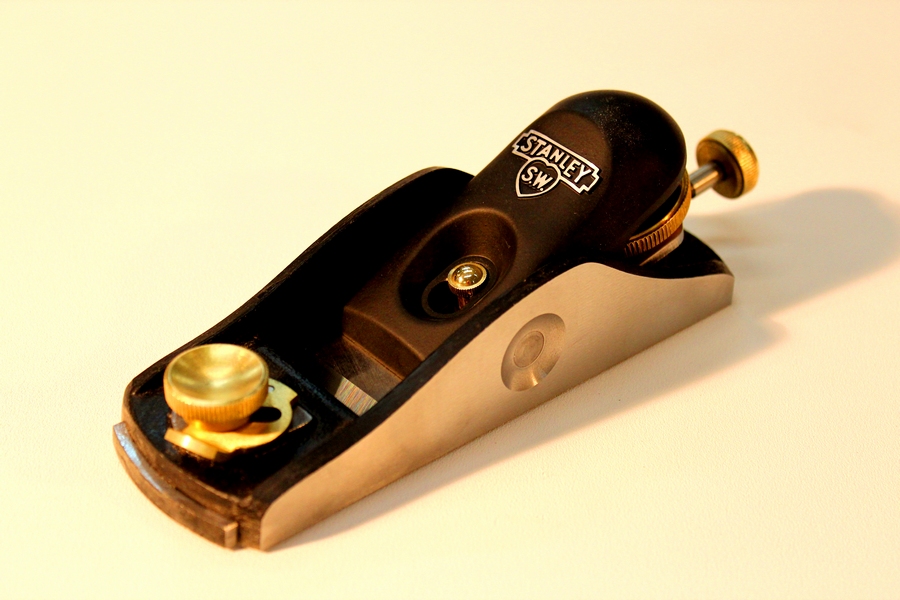
I have several different block planes, and each one serves a different purpose for me. But if I could only have one, my choice would be a Stanley 60-1/2 or equivalent. I generally prefer an older one, as the quality of steel and most components is generally better, but quality can be inconsistent on used tools so a safer bet would be to start with a new Stanley Sweetheart version of this plane. This tool can perform a variety of tasks with little chatter and a healthy level of precision.
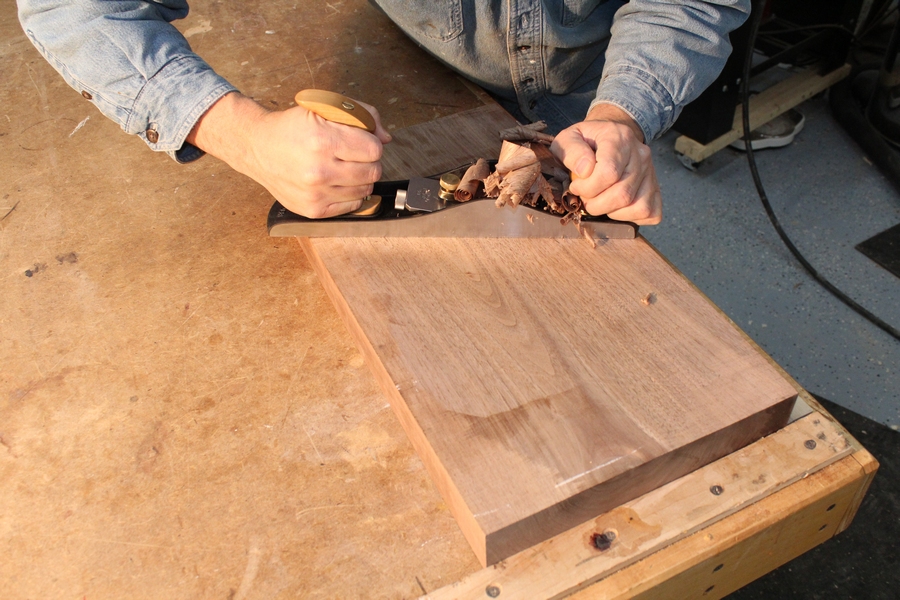
Jack plane next. The next stop on the hand plane path should be a good quality jack plane. This tool can be used when you have a board or a panel that requires face jointing but is too wide for the capacity of your jointer. I frequently find myself working with rough boards that are too wide for my 8” jointer, which leaves me with a few options. A) I can build a sled to hold the board evenly as I run it through my planer, B) rip the board into smaller pieces that will fit on my jointer, or C) use a jack plane to flatten one side of the plank. I prefer to use the jack plane as I find it quicker, less hassle, and a rare opportunity to get a cardio workout in the shop. I also appreciate the fact that I can leave the wider board intact without disrupting the grain pattern by ripping and re-gluing.
The hybrid use of a jack plane goes like this. Just flatten one face by planing perpendicular to the grain, and when you think you are getting flat, check your progress with winding sticks by placing one winding stick on each end of the board and determine what further adjustments need to be made to achieve a flat surface.
Once you have a established one flat face on the board, flip it over and place the flat surface down on your planer. The planer will then do what it does best; creating a board that has two flat and parallel faces. Then flip the board again and clean up any imperfections left from your jack plane work.
If you don’t have a power planer, or if you are looking for a pure hand tool experience, continue on after the jack plane, hitting the surface with a #6 or #7 hand plane to flatten the surface, then flip the board over and repeat the process. Although I occasionally take the full Neanderthal approach, I am typically just as happy to enjoy the performance advantages of the hybrid approach.
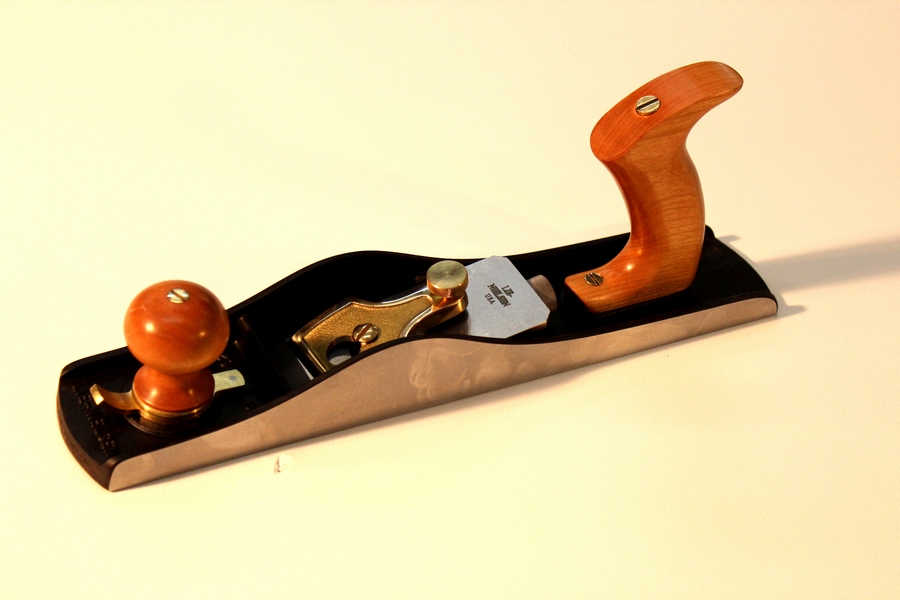
My favorite jack plane is the Lie-Nielsen low angle version. This plane delivers great results right out of the box and can be easily set up for fast removal of stock or, by closing the adjustable mouth, smoothing operations. The thick blade allows it to power through heavy cuts, while the low blade angle makes it a great choice for stock removal on figured wood. If the price tag of this tool is too hefty, you might consider a 5-1/2 Wood River Jack Plane. I recently had an opportunity to use one and I was quite impressed by its capabilities, pealing perfect full width translucent shavings from hard maple with little effort.
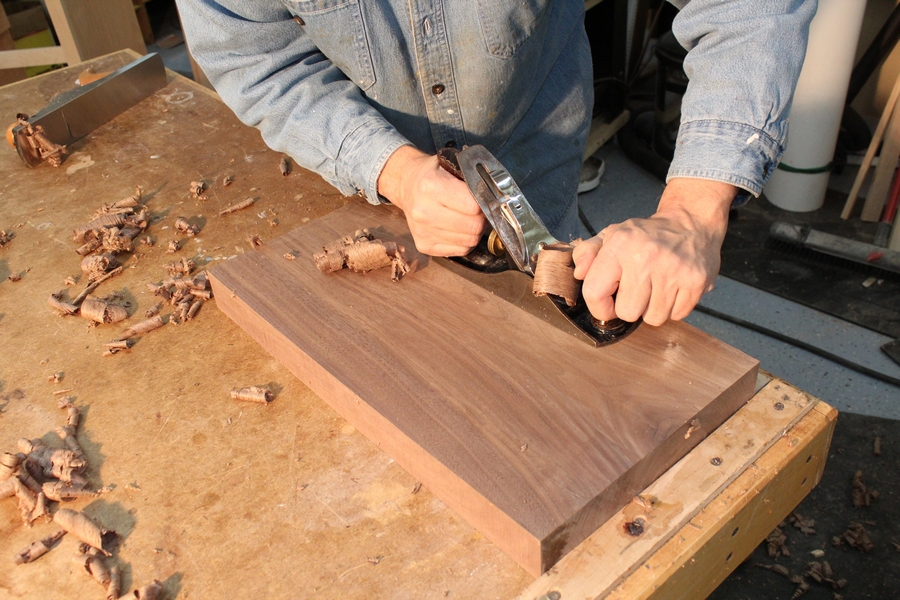
If you liked the jack plane, you will love a #4 smooth plane. After achieving a flat surface with the jack plane/power plane combo, the next goal is achieving a smooth surface. For that we turn to a #4 smoother. Of all the planes in your arsenal, this is the most critical to buy high quality and maintain in good working order, because it will be used to produce a show surface. With a good quality smooth plane, you can render a board smooth as glass in short order without all the noise and dust of power sanding.

For this tool I recommend picking up an older Stanley (ideally a Bedrock, but many of the non-Bedrock older Stanleys are great as well) that has been well tuned to produce perfect shavings. If you have become familiar with hand plane anatomy from your first two purchases you might consider buying one that requires a little TLC, but be sure that it is solid and has no cracks.
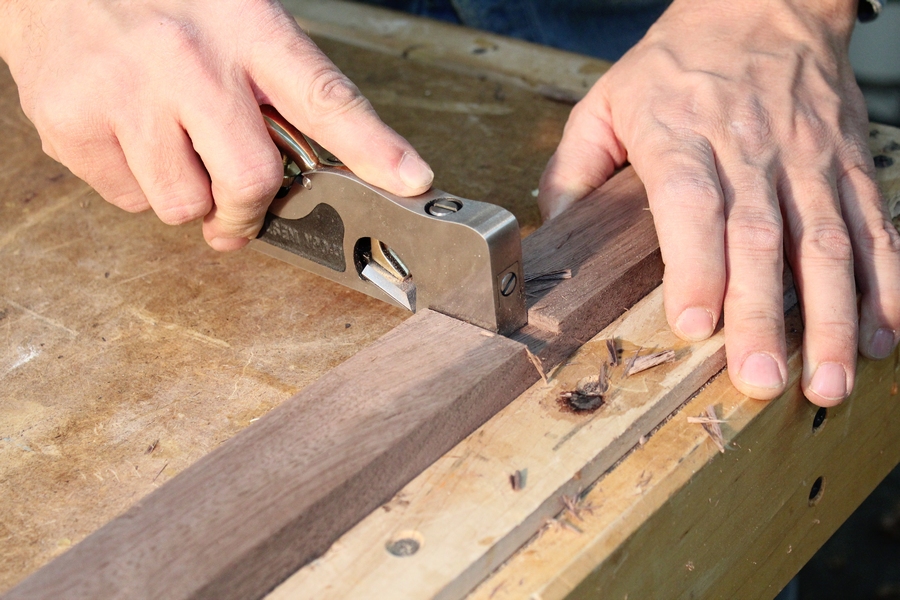
Shoulder plane. For the hand tool purist, a shoulder plane is used to do the heavy lifting in forming rabbets and tenons. The hybrid woodworker will use power tools to hog out the majority of waste, turning to the shoulder plane to achieve a perfect fit. There is a wide range of sizes and styles available, so choose one that matches your woodworking preferences and feels good in your hand. Larger shoulder planes excel at removing stock more quickly and flattening longer surfaces, so if you tend to work on a larger scale or want to dabble in full hand tool woodworking, look for a larger unit. For finesse tuning of joints you can get by with a smaller version.
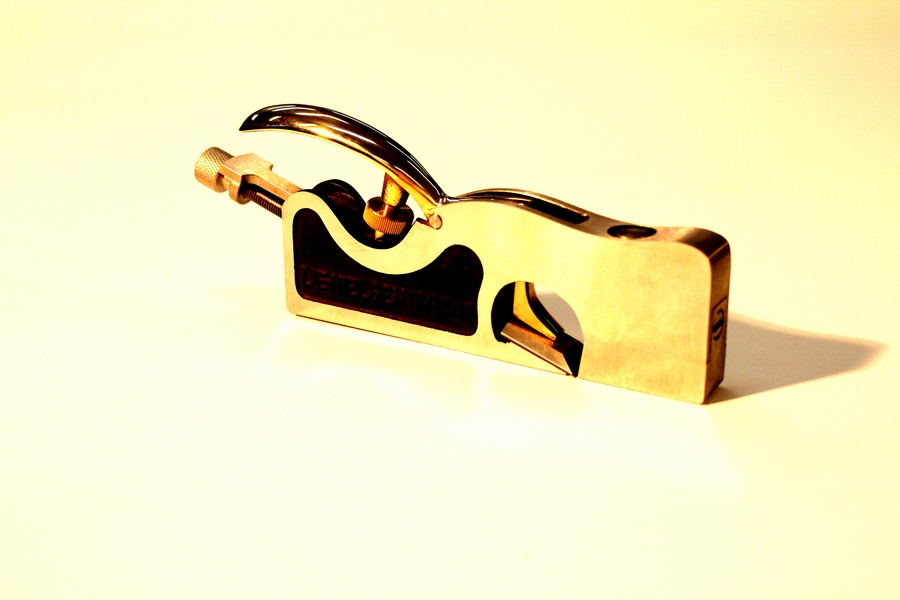
My recommendation for a hybrid woodworker’s first shoulder plane is to find one with a small, traditional design. The traditional design fits well in the user’s hand, and the small size will make it easier to master. There are several good options out there, such as the Lie-Nielsen small shoulder plane that I use. For a more economical option, look for a good quality vintage Record or Stanley should plane which can provide a good user experience as well.
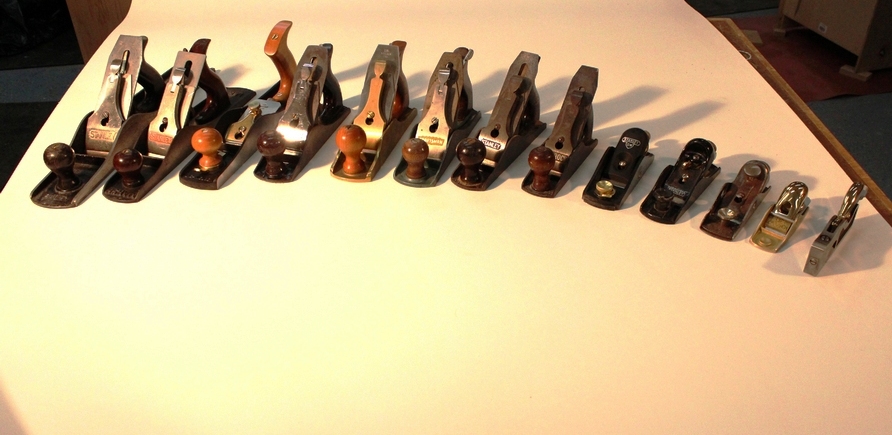
Be aware that hand planes are addictive! I believe the hand planes that I have numerated here offer a great phased approach to give you a taste of the precision and quality that high caliber planes can bring to your woodworking. If you learn how to use and maintain them, this starter set will extend your capabilities, and from a practical sense you might not ever need to buy another hand plane after you have acquired these. That said, many woodworkers (well, at least me) find the experience of creating translucent shavings so enjoyable that there is a constant temptation to add “just one more”. If you decide to give hand planes a try and find yourself a bit obsessed, well, you’ve been warned…
What are your favorite hand planes? Do you have a suggestion for a plane that should be included in the “hand plane starter kit? If so, I’d love to hear about it in the comments section.
Sources
Lie-Nielsen Toolworks
https://lie-nielsen.com/
Low Angle Jack Plane, $245
Small Shoulder Plane, $165
Stanley Tools
https://www.stanleytools.com/
Sweetheart Bailey 60-1/2 Low Angle Block Plane, $99
Woodcraft
www.woodcraft.com
WoodRiver #5-1/2 Jack Plane, $195
Got hooked on Veritas planes. In the last 6 months I purchase about a dozen planes and sharpening stones from Lee Valley. Some of the most fanciest planes I've seen. Building a new work bench and installing assortment of vises also. The planes will help me flatten, rabbits, dados and more. I'm retired and for an intermediate woodworker and a hobbiest, I'm looking forward to the challenge.
I;ve been a carpenter most of my life. I got into flipping houses. I bought a house that was built 1922. The kitchen cabinet was built by a cabinet maker. sometimes I imagine the hand tools that them guys carried, especially planes, chisels set and ect. are they any pictures of what they may have carried.
I was interested in hand planes, so I bought a copy of Christopher Schwartz's "Handplane Essentials." (And now I'm on my 4th re-reading). I started by lapping and sharpening an old Craftsman plane using a glass plate and sandpaper. I found I could get it really, really sharp and working fairly well. I was hooked. I purchased a Lie-Nielsen block plane and fell promptly in love. Next came a Lie-Nielsen low-angle jack plane. So versatile, especially with multiple blades of different grinds. I learned that I could use it to dimension lumber or, with a different blade, smooth contrary mahogany. Next was a small L-N shoulder plane; then a L-N No. 4 with a 50 degree frog. (See Christopher Schwartz on the ecstasy of the No. 4.) I treated myself after that to a L-N chisel plane. (I had a good day at the casino). When Lie-Nielsen comes back on line, I'll buy a medium shoulder plane. That should keep me happy for a while, at least. In short: using hand planes is addictive. Yes, it is an expensive habit-- which I justify by telling myself that, at age 72, a 2 hour session using a series of planes is good for me. I second the recommendation: buy the best planes you can afford. Above all, take the time to learn how to sharpen. Nothing is more frustrating and takes more joy out of hard work than a dull blade.
When my father in law passed, I was tasked with cleaning out his garage. In a dark corner there was a hunk of rusted something that almost went in the scrap barrel. Out in the light I realized it was a plane. Filthy and heavily rusted, I took it home anyway. It was a complete, I damaged (very rusty) Stanley Bedrock #4-1/2. It cleaned up beautifully. I honed the original iron to a razor, scary sharp edge, and it’s now one of my favorite tools. Then I got hooked. I saw an ad on FB Marketplace for a hand plane, also badly rusted. Next town over, I took a ride. Guy wanted $20 so I offered him $15. He was happy and so was I. It was a Stanley Bailey #3. It also cleaned up beautifully and according to the patent numbers it is at least 100 years old! I use them both frequently.
I just purchased the Woodriver plane set consisting of the #3,4,5,6 planes. Still have to wipe em down, flatten them and hone them to try em out. They seem like an awesome set
Bought the plane and used it and loved but I had to try to adjust it and now cant get it to work anymore. Could you help with the tuning of a hand plane. Have a stanely 60
Where can I get a shoulder plane like the one shown?
I am right about in the middle of this batch. A couple of years ago, I got my first hand plane - a Stanley Sweetheart block plane. This past Xmas, I got a Wood River 5 1/2 jack plane. I'm very pleased with the build quality on both of them. While they have been enjoyable to fidget with, I have yet to fully understand their usefulness. The most practical scenario seems like a situation in which I need to flatten a board/panel that is too wide to go through my jointer or planer. Getting a shoulder plane seems like a good idea for fine-tuning joinery cut on power tools. And I do like the idea of a smoothing plane, since by all accounts, it produces a nicer surface than abrasives. A lot of people seem to really love hand planes, so I will keep tinkering, even though they don't feel very necessary to me at the moment. Who knows? Maybe I'll end up being one of those guys who forsake power tools altogether at some point.
" start by buying hand planes that are high quality, tuned and ready to go". But what if Lie-Nielsen is a bit on the pricey side for our budget? I usually shop antique malls and swap meets for good, restorable Stanleys and other good brands. For new in the box, I go to a Wood River or Stanley Sweetheart, both of which will require some work right out of the box. I need to clean out the oil, check the sole for flatness, round over some of the sharp points that can leave tool marks, and sharpen the blade and add a secondary bevel. All in all under an hour. Sure the Wood River and Stanley can take shavings out of the box but putting in the small amount of work to set it up properly makes a huge difference in how it performs and how the work looks afterwards. Excellent list, BTW. My list would be one of my block planes (depending on the job), WR Low angle jack plane with an extra scrub plane blade (dual use), Stanley 4 1/2 (1925), and one of my shoulder planes if doing mortise/tenons and a router plane for dadoes. I also have a block rabbet plane that I love.
Probably because they are not much used now you did not mention boat building planes. The old time boat builder quite often had a chest of 50 or 80 planes many of which he had made himself of various shapes to fit specific tasks these are a fascinating topic in their own right